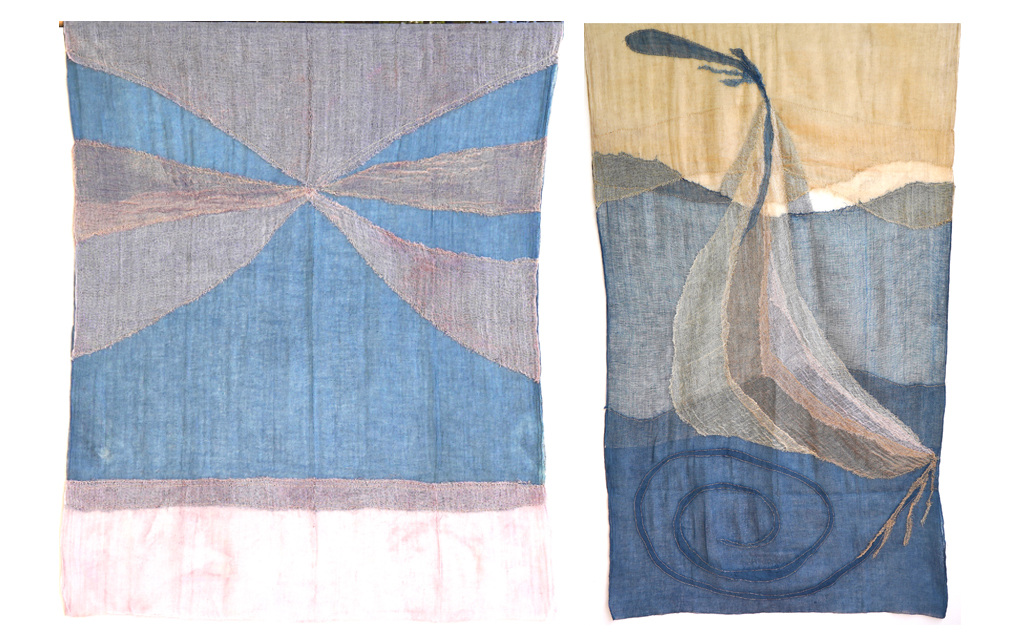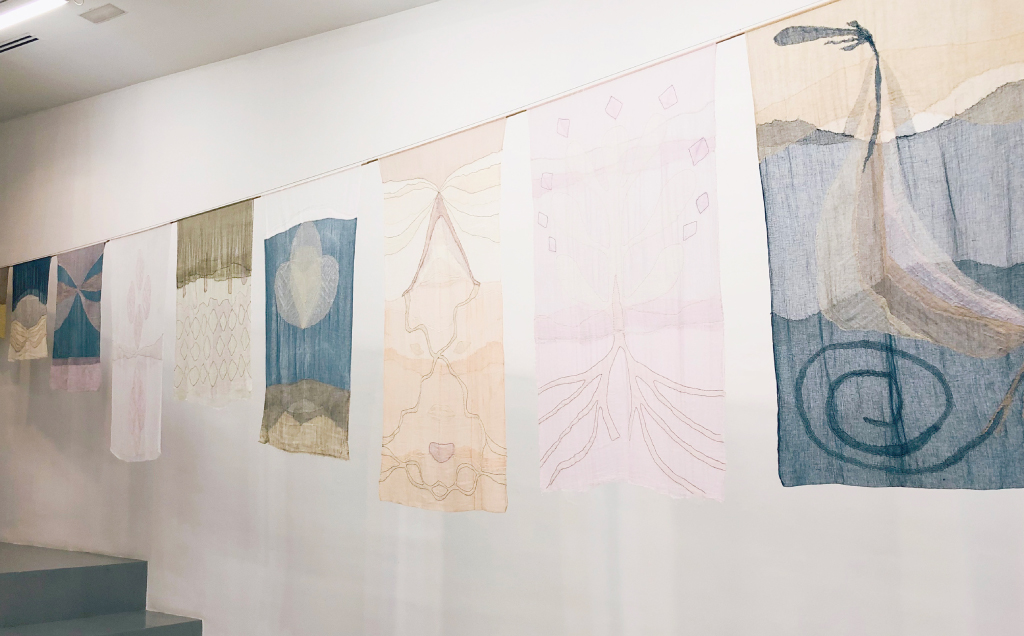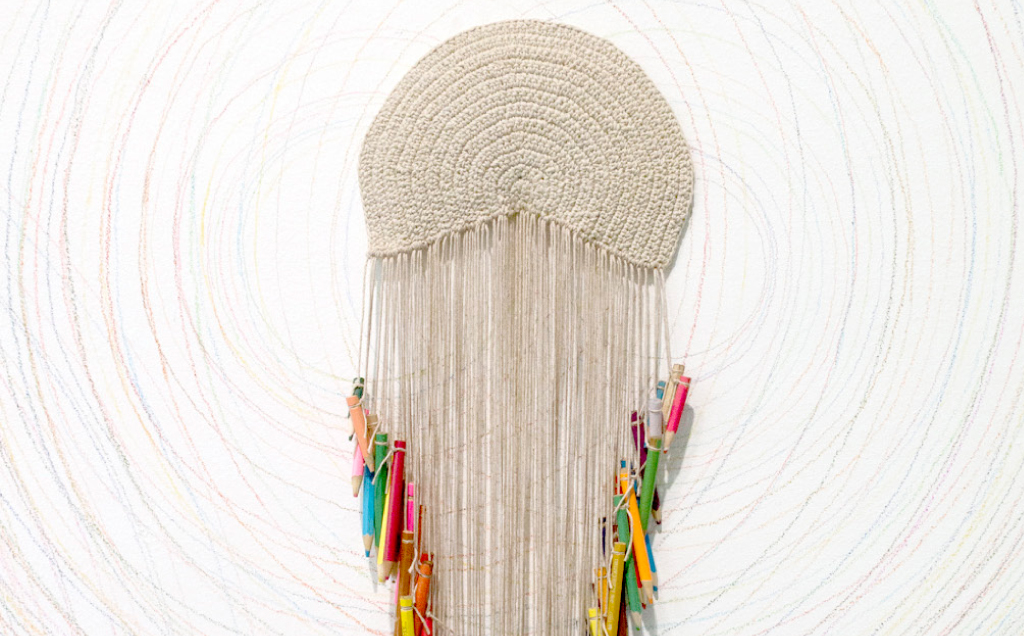















Catherine Bauer_Breathing an eternity_01/18/20_03/20/20_Dossier
Finding a state of awareness in convulsive times, in times of human and natural crises, involves connecting with questions and actions that push the vulnerability of bodies, species and surrounding conditions towards necessary questions of communication, care and union. During the unstable year that was 2019, the abundance of information and evidence on planetary destruction combined with the social and revolutionary awakening in Chile, which took on the systematic violence of privatisation along with the exploitation of the environment and human life itself. In both scenarios, the sensations and emotions of individual and collective suffering have been the backdrop for conflicts and doubts about how to continue, become stronger and find reparation.
Events from social and everyday life are infiltrated into the work of Catalina Bauer, together with personal and intangible experiences of ideas, dreams and observations related to home and family life. In particular, the way nature suffers in its fragility from irreparable damage as evidenced by thermoelectric facilities, mineral exploitation, water and land theft and the crisis in providing access to them, drought, global warming and so much more, constitutes an extenuating atmosphere of unbridled economic activity. At home and in the domestic context, this permeates and shakes things up on a micro scale in food, safety, consumption, contamination and communication. Based herself on an intimate deviation, which simultaneously seeks to repair nature’s wounds, the artist has intuitively engaged with these adverse conditions. How might the light of love be revived? How might we stop exploiting materials for artistic work? How can art live with nature, appreciating and nurturing it while creatively prolonging its existence?
The exhibition “Breathe an Eternity” circumscribes these questions through subtle signs. Its core is composed of pauses, lapses and maps, which through repetition and difference strive for slow contact with the body and with nature. The series of “Paños”, in reference to small cloth pads, is at the centre of the exhibition; the translucent and lightweight coincidence of sewn gauzes refers to meditations that cultivate patience and genuine harmony with the Earth. Meanwhile, the new series of “Lapses” are textile objects, supposedly meant for drawing. They intervene in the gallery space in a playful way, tracing multi-colour concentric circles and taking on a unified quality that exceeds any notion of a perfect geometry, invoking the liveliness of drawing and colour from out of a matrix of pencils. Finally, the animated video “Influencia” [Influence] features paint and oil on paper, while water is used to accomplish a marbling technique. This refers to the flow of spontaneity, where the silhouette of a woman appears and disappears, creating a language of invisible gestures over top of the fabric.
Fabric, whether combined with rope, elastics, strings, wool or cloth, is one of the explorative channels in Catalina Bauer’s work. As these materials are studied, in the face of nature’s latent state of emergency, gauze pads appear as sparks of relief, as bursts of peace in unbridled times of violence and revolution, caringly accumulating paths of relief.
It is inevitable to allude to this moment of instability in Chile, as well as in the world, to focus in on this minor counterpoint: each gauze pad represents warmth as a caring, reparative cloth. It is as if the gauze kept in our first aid kits at home to heal a wound or warm a sore after an accident, were to live another life. A natural, human message opposing atomisation and the eradication of the ecosystem; a call to fuse the body and nature together, channelled by the protective touch of hands as it is converted into messages and notes. This fusion is presented with such extreme delicacy that we are obliged to detain ourselves for a moment.
These pads come from the cotton plant, an organic fibre born of a seed. When still a sprout, its texture is soft and smooth. Once it has become a mesh of fine threads, it takes on the feel of white gauze, soft and malleable. Gauzes are natural materials that act on the body: they gather, absorb, clean, cover and protect. They contribute to corporeal transformation and revivification. These multiple functions move into other domains in Catalina’s creations. A re-composition of the ecological fibre from the threads and the body.
Experimenting in the kitchen with gauze fibre and botanical dyes, Catalina uses the organic remains left behind from meal preparation as the primary source for her tints. The kitchen is provisionally transformed into an artisanal laboratory, as she extracts the substances of plants and vegetables from her immediate surroundings: celery, red cabbage, lemon, black bean, Yerba mate, pomegranate. Or just as well she uses seeds, avocado pits and the shells of nuts, like walnut. All of these materials take on other affective consistencies, with the knowledge of the dyes Catalina was able to derive in this process, and through her encounters with other female artists (Loreto Millalén and Andrea Lira).
In contact with dyes, the gauzes absorb the pigments unequally, creating fascinating effects of colour, absorptions and stains. White gauze becomes warmer, as if the colours were enveloping the gauze and the gauze embracing the colours. Seen from a distance, Bauer’s “Paños” have an aqueous effect, similar to the versatile treatment of watercolours, with diluted thicknesses, transparencies and gradations. A steamy liquid sensation, where the spectrum of one colour is fused with another’s. In the same way, together they end up conjuring a shielded atmosphere, touching us emotionally through their fragility and delicacy. There is so much air in each of these gauzes that each troubled breath, relieved, might find a way to return.
What is more, if we approach the subtleties of the compositions the airiness becomes more apparent. By means of simple stitches with thread, Catalina joins the gauze pads, letting herself be carried by their own irregular edges. It is the nobility of the material that ends up orienting the path of union between the textiles and the projections of the figures. Simple yet evocative aspects can be derived from them: landscapes and horizons are overlaid on geometric and human shapes, along with petals, whirls, tightrope walkers, vulvas, eyes, clouds, volcanoes, seeds, trees, watercourses, oceans and underground waterways, amongst others. Perhaps, if there is some unifying aspect, it would be the triangular shapes, which point towards both the sky and the earth, the primordial energies of nature cultivated and conducted, in reference to fire and wisdom, fruit and seeds.
The “Paños” could be a universe where oracles abide with gems, Mapuche spirits, talismans, waves or utopias. A magical language where new imaginary worlds appear together with poems. A cycle where each shape enlivens a source of growth in a natural time frame, its states appearing as flows of solid, liquid and gas elements, whose nutrients come from a domestic context of residues and routines. In disastrous times communicative energy becomes incarnate, setting itself somewhere between inside and out, with neither beginning nor end. Breaths that sustain bodies, prolonging themselves, like nature, in eternity.
Soledad García Saavedra
Curator and Art Historian
with the support
